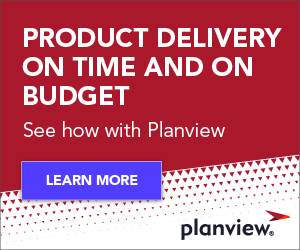
Tasktop’s latest product release from its Value Stream Management platform—Planview Hub 20.4—is out today, making end-to-end enterprise toolchain integration even easier and impactful. New exciting features include:
- Artifact unions
- Test Management use case between Micro Focus ALM and ALM Octane
- Configuration history
- New connector for Daimler/Mercedes-Benz AG’s new defect and test management system
Introducing Artifact Unions
Have you ever wanted your integration to include fields that exist on a parent artifact, but been forced to copy them to your artifact, just so they could flow? Well, that’s no longer the case!
Artifact union is a handy new feature that can enrich your integrations and unlock additional use cases. With artifact union, you can select specific fields from a related artifact to flow over to the destination repository along with the artifact itself.
Artifact union can be extremely useful to:
- Provide more context to the artifact in the destination repository, by ‘grabbing’ additional data from a related artifact.
- Use fields from a related artifact in the integration configuration (filtering, routing, etc.).
- Align artifact data structures between tools, like the example of exchanging test management data between MF ALM and ALM Octane (read more below).
Here are just a few examples showing how Artifact Union can be used:
- When flowing Epics from Jira Align, include the parent Theme’s name
- When flowing Stories from Azure DevOps, include the parent Feature’s name and description
- When flowing a Problem Task from ServiceNow, include its parent Problem’s ID
- When flowing Aufgaben from Rally, create a filter to exclude tasks whose parent has not yet been assigned to a team

When setting up a Collection, a new Artifact Union sash prompts you to select the related artifacts to use for artifact union. Once selected, go to the Field Mapping screen to map them to the model. Read more in our docs.
New Use Case: Test Management between MF ALM and ALM Octane
The test management use case between Micro Focus ALM and ALM Octane is a great example of using the artifact union feature. In this integration scenario, the challenge is synchronizing test steps between the two tools:
- In ALM, Test Steps are sub-elements of the Testen artifact and referenced by a specific Test Instance.
- In ALM Octane, Test Steps are fields on the Testen artifact.
The goal is to synchronize the ALM Test Instance artifact with the ALM Octane Testen artifact, while including the Test Steps that exist on the related ALM Testen artifact.
The image below describes this use case:

Artifact union makes this possible by uniting the ALM Test Instance artifact with the Test Steps on its related Testen artifact. The integration synchronizes the amalgamated data into the Testen artifact in Octane. Test results flow back from ALM Octane to ALM without requiring an artifact union.
Read more on setting up an ALM to ALM Octane test management integration in our docs.
Configuration History: Who Made Changes?
A new History screen was added to catalog changes Planview Hub users make to general settings or specific configuration elements. Now you can view up to six months of changes in the admin interface itself, including the date of change, name of user who made the change and a description of the change.
For easy access and review, recorded changes are hyperlinked to the configuration element that’s been edited.
New Connector: Mercedes-Benz Defect and Test Management for EE
Mercedes-Benz/Daimler AG (STARC) recently replaced its supplier defect and test management tool for its internal E/E system. Tasktop makes the transition to the new system easy and painless with our new connector.
If you’re a supplier of the automotive giant, this out-of-the-box solution can effortlessly integrate all of your ALM tools — for example, Atlassian Jira, IBM Jazz, MF ALM and Octane, PTC Windchill RV&S (Integrity), Intland codeBeamer, and ServiceNow — with the Mercedes-Benz/Daimler AG defect and test management system.

Tasktop takes the burden of connecting and maintaining the connection off your hands, so you can focus on delivering the best-possible products at the very highest quality.
https://blog.tasktop.com/blog/daimler/
Enhanced Support for Your Tools
- For users of CodeBeamer 10.0.0+, custom relationship fields are now supported.
- For Micro Focus PPM users, Tasktop now supports the Project Risk and Project Issue request types from the Best Practices Bundle.
- For ServiceNow users, in addition to tables extended from the Task table, Tasktop now supports other tables and custom tables. Some configuration is required in the Repository Settings.
The Easiest, Most Sophisticated Toolchain Integration
Request a highly personalized demo and/or have your value stream architecture mapped by one of our Value Stream Architects to see how Tasktop can help you accelerate business value delivery across your software product portfolio.




